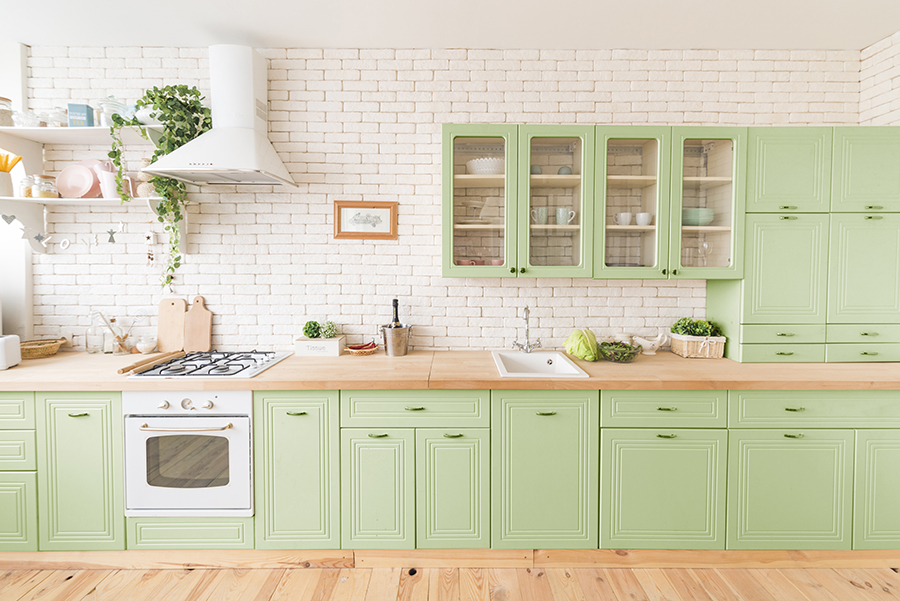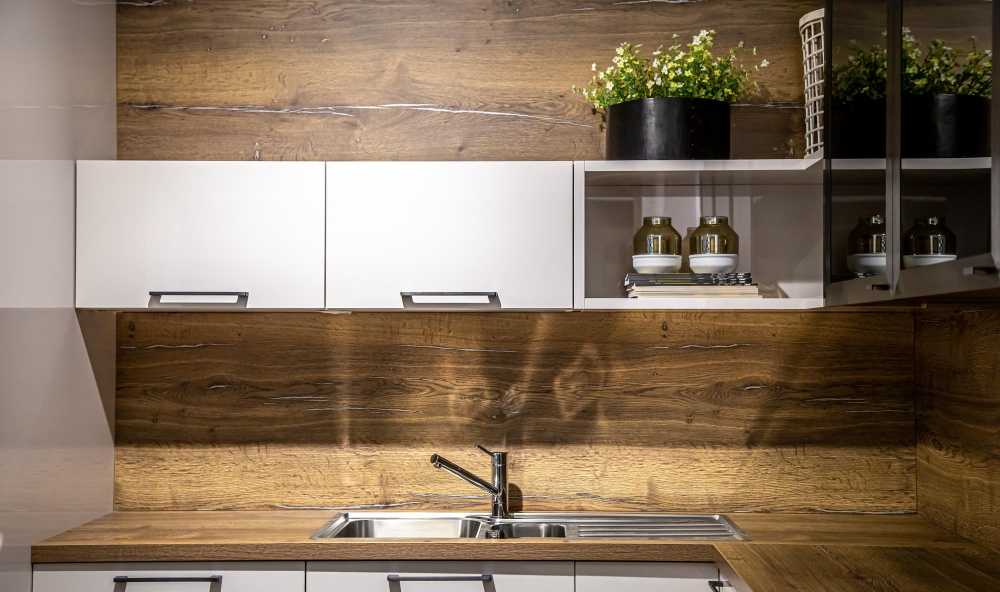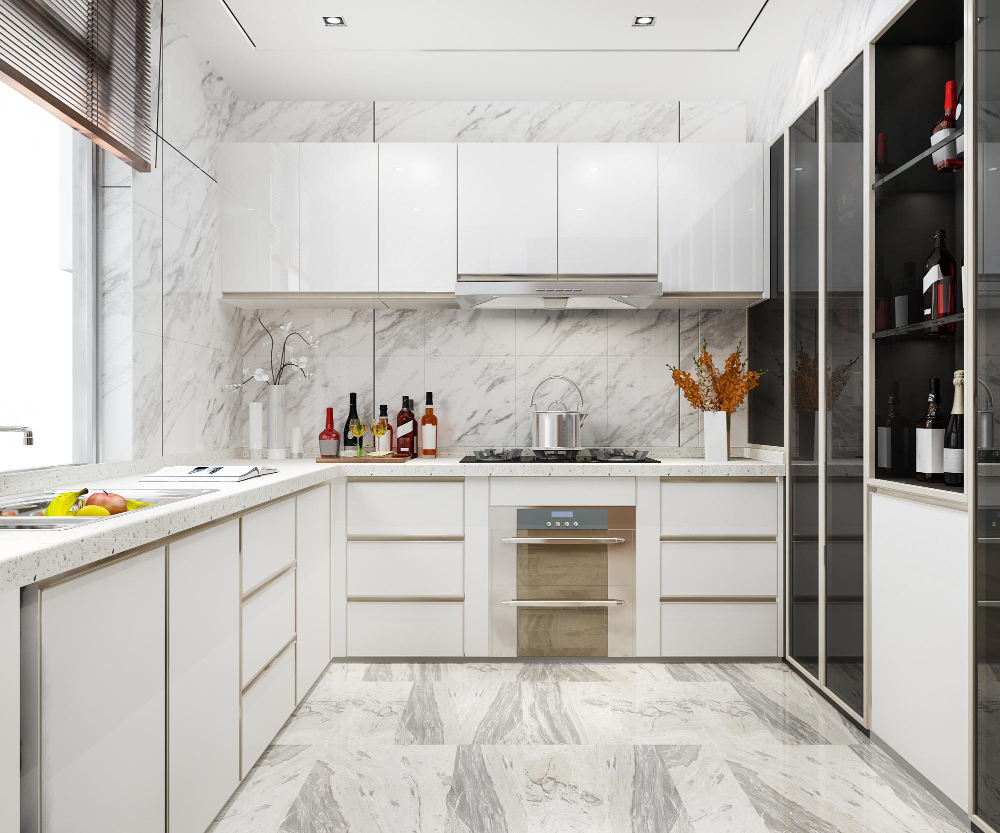Last updated on
Discover the differences between butcher block and laminate countertops Read on!
When I first started decorating homes, I never thought much about countertops. To me, they were just a functional aspect of the kitchen that needed to be durable and easy to clean.
But as I gained more experience in the field, I realized that countertops can make or break the entire look of a kitchen. That’s when I started paying closer attention to the materials used for countertops and their various pros and cons.
In this blog post, we’ll be comparing two popular options: butcher block and laminate countertops. So if you’re trying to decide which one is right for your home renovation project, keep reading!
Key takeaways:
- Butcher block made from wood, laminate made from layers of paper/fabric.
- Butcher block is durable, laminate is affordable.
- Butcher block requires oiling, laminate is low-maintenance.
- Butcher block has warm/natural look, laminate comes in various colors/patterns.
- Butcher block more expensive, laminate more affordable.
What's Inside
Butcher Block Overview

Butcher block countertops have been around for centuries and were originally used in butcher shops to prepare meat. Today, they are a popular choice for homeowners who want a warm and natural look in their kitchens.
Butcher block is made from strips of wood that are glued together to create a solid surface. The most common types of wood used for butcher block countertops include maple, oak, cherry, walnut and teak.
One of the biggest advantages of butcher block is its durability. It can withstand heavy use without showing signs of wear or damage as long as it’s properly maintained.
However, it’s important to note that unlike other countertop materials such as granite or quartz which are heat-resistant; hot pans should not be placed directly on the surface because this could cause scorching or warping over time.
Another advantage is its versatility when it comes to design options since there’s an array of colors available depending on the type of wood chosen – from light blonde hues like maple all the way up through rich dark browns like walnut- making them easy to match with any kitchen decor style.
In terms of maintenance requirements: regular oiling (once every 6 months) will help keep your countertop looking great while also protecting against moisture damage caused by spills etc., but if you’re someone who doesn’t mind scratches adding character over time then no additional care may be necessary!
Laminate Countertops Basics

Laminate countertops are a popular choice for homeowners who want an affordable and low-maintenance option. They are made by layering paper or fabric with resin, which is then bonded to particleboard or MDF (medium-density fiberboard).
The top layer is a printed design that can mimic the look of natural stone, wood, or other materials.
One of the biggest advantages of laminate countertops is their affordability. They typically cost less than half as much as butcher block and other solid surface options.
They come in a wide range of colors and patterns to suit any kitchen style.
However, there are some downsides to consider when it comes to laminate countertops. While they’re durable enough for everyday use, they can be easily scratched or chipped if you’re not careful with heavy objects like pots and pans.
And while newer laminates have improved water resistance compared to older versions that could swell up from moisture exposure over time; still standing water should be avoided on them.
Overall though if you’re looking for an easy-to-clean countertop material that won’t break the bank – laminate may just be your best bet!
Durability Comparison

When it comes to durability, both butcher block and laminate countertops have their strengths and weaknesses. Butcher block is made from natural wood, which means that it can be prone to scratches, dents, and water damage if not properly maintained.
However, with proper care such as regular oiling or sealing of the surface every few months or so can help prevent these issues.
On the other hand, laminate countertops are known for being extremely durable due to their synthetic materials like plastic resins bonded together under high pressure. They are resistant to scratches and stains making them a great option for families with young children who may accidentally spill food on the counters.
Overall when comparing durability between butcher block vs laminate countertops there isn’t necessarily one clear winner since they each have different advantages depending on your needs in terms of maintenance requirements versus resistance against wear-and-tear over time.
Maintenance and Care

When it comes to maintenance and care, butcher block and laminate countertops have different requirements. Butcher block is a natural material that requires regular oiling to prevent drying out, cracking or warping.
It’s also important to avoid cutting directly on the surface as this can damage the wood fibers. On the other hand, laminate countertops are relatively low-maintenance and easy to clean with just soap and water.
They’re also resistant to stains, scratches, heat damage and moisture.
However, if you do end up damaging your laminate countertop (e.g., by accidentally placing a hot pot on it), repairing it can be difficult since laminates cannot be sanded down like wood surfaces can.
Ultimately when deciding between these two options for your kitchen renovation project consider how much time you want or are willing to spend maintaining them over time in addition of course of their aesthetic appeal, durability, cost analysis among others factors .
Aesthetic Differences

When it comes to aesthetics, both butcher block and laminate countertops have their own unique look. Butcher block has a warm, natural feel that can add character and charm to any kitchen.
It’s available in a variety of wood species such as maple, oak, cherry or walnut which gives you the flexibility to choose one that complements your kitchen design.
On the other hand, laminate countertops come in an endless array of colors and patterns. They can mimic the look of natural stone like granite or marble without breaking your budget.
Laminate is also available in solid colors with different finishes such as matte or glossy.
Ultimately choosing between these two options will depend on personal preference and style preferences for your home renovation project
Cost Analysis

When it comes to home renovation projects, cost is always a major consideration. So let’s take a closer look at the cost comparison between butcher block and laminate countertops.
Butcher block countertops are typically more expensive than laminate ones. The price of butcher block can vary depending on the type of wood used, but generally speaking, you can expect to pay anywhere from $40-$100 per square foot for materials alone.
On top of that, installation costs will add another $30-$50 per square foot.
Laminate countertops are much more affordable in comparison. You can find them for as little as $10 per square foot for basic options and up to around $40 per square foot for higher-end designs with added features like edge treatments or patterns.
While it may be tempting to go with the cheaper option when renovating your kitchen on a budget, keep in mind that durability and maintenance should also factor into your decision-making process.
Environmental Impact

When it comes to choosing between butcher block and laminate countertops, environmental impact is an important factor to consider. Butcher block countertops are typically made from wood, which is a renewable resource.
However, the type of wood used can make a big difference in terms of sustainability. For example, bamboo butcher blocks are becoming increasingly popular due to their fast-growing nature and low impact on the environment.
On the other hand, laminate countertops are made from layers of paper or fabric that have been impregnated with resin and bonded together under high heat and pressure. While this process does use some non-renewable resources such as petroleum-based products for the resin coating layer; many manufacturers now offer eco-friendly options that contain recycled materials.
Overall both types have their pros when it comes to environmental friendliness but if you’re looking for something more sustainable then opting for bamboo butcher blocks or eco-friendly laminates would be your best bet!
Installation Process

Once you’ve decided on the type of countertop material you want, it’s time to think about the installation process. Butcher block countertops are typically installed by professionals due to their weight and size.
The installation process involves cutting and fitting the butcher block pieces together, sanding them down for a smooth finish, and then sealing them with food-grade mineral oil or another protective coating.
On the other hand, laminate countertops can be easily installed as a DIY project since they come pre-cut in standard sizes that fit most kitchens. Laminate sheets are glued onto plywood or particleboard using contact cement adhesive before being trimmed to fit around sinks and appliances.
It’s important to note that while installing butcher block may require professional help initially, it is easier than laminate when it comes time for repairs or replacements because individual sections can be removed without having to replace an entire sheet like with laminate.




